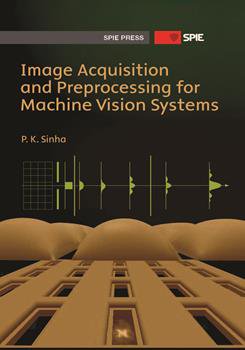|
The image features inherent in various shades of gray or color are usually referred to as image contrast. In any machine vision setup, feature extraction is difficult due to the absence of contrast in the captured image. Perceived contrast depends on the ambient lighting and viewing angle of the scene, so the use of controlled illumination is often necessary to highlight some of the critical features of the target in a consistent manner. Although many traditional scientific photographic methods have been adapted for machine vision, the environmental limitations imposed by industrial scenes do not permit the emulation of some of the more dramatic ways of image capturing (Fig. 4.1). This chapter describes some of the key aspects of illuminating industrial scenes for computer-based imaging systems. Figure 4.1 (a) Light tenting. (b) Direct lighting to capture the image of a shiny target (adapted with permission from Ref. 1). 4.1 Radiant Sources Sources of radiant energy have spectral contents that vary from a single wavelength to a large envelope of wavelengths. For CCD (charge-coupled device) cameras (see Chapter 5), the effectiveness of a particular lighting source is closely related to the sensitivity of silicon as well as the optical properties of the target (silicon's characteristics as a light detector are considered in Chapter 5). Silicon's average spectral response is shown in Fig. 4.2 along with the responses of several other light sources. The sources of illumination may be broadly grouped into the four categories listed below. |
|
|


